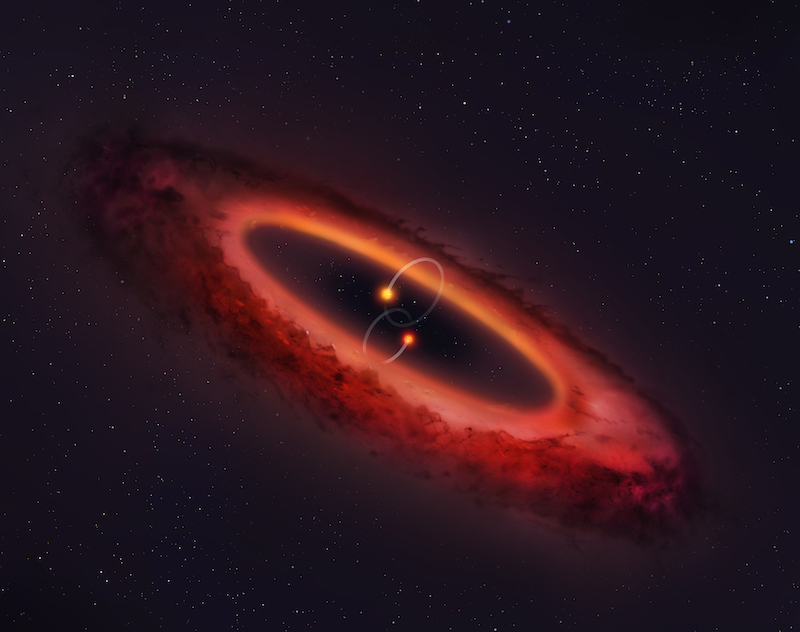HD 98800 - the polar circumbinary disk
As outlined in the paper and the press release (free PDF here), we have discovered that the HD 98800 quadruple star system hosts a disk that orbits at right angles to the binary it surrounds.
Here is Fig. 1 from the paper, which shows the setup. If the geometry of the disk around the inner binary doesn’t make sense, try taking a look at this simulation.

What does this show? The system has two binaries, A and B, which orbit each other at a distance of about the Pluto-Sun distance. Since both A and B are binaries, the individual stars are called Aa and Ab, and Ba and Bb. The “inner binary” BaBb is surrounded by a ring of gas and dust about the size of the Asteroid belt, this is shown in the right panel. All that is then orbiting the other binary, AaAb. The curious thing is that none of the orbital planes are aligned, and the BaBb plane is at right angles to the plane of the disk.
This system should prove very valuable to people that are interested in disk physics - here we can quantify the effects of the stars on the disk so compare the data with models. Of course, it’s possible that the disk is forming planets, and there is evidence that suggests this is underway, meaning that polar circumbinary planets may exist and be found in the future!
